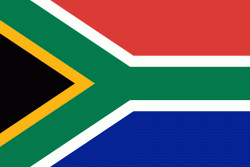Vhembe District Municipality (Vhembe District Municipality)
 |
Vhembe is settled by the Venda people who constitute the majority of the population of Vhembe. Later, from around 1820 onwards, the Tsonga people started to invade from the south east and are today a majority in the whole southern and eastern part of Vhembe, which are known today as Malamulele (in the east of Vhembe) and Hlanganani (in the south of Vhembe). At the same time, the Boer Voortrekkers arrived in Vhembe, at around 1836. Venda communities are only found in Vhembe district and as a result, there are no existing Venda communities or villages outside the district. Vhembe means Limpopo river in the Venda language. Before the renaming of Limpopo Province in 2002, the name Vhembe was submitted to the Limpopo legislature as one of the desired name for the new Province but the majority of the members of the Legislature voted against the name Vhembe in favour of the name Limpopo. The Dzata ruins in Thulamela Local Municipality once served as the main settlement and capital of the Venda empire which had dominated the area during the 18th century.
Boer settlement of the territory began in the late 18th century and gradually upsurged throughout the 19th century. By the turn of the century, the Soutpansberg was taken by the Boers from the Venda rulers, making it one of the last areas in the future republic of South Africa to come under white rule. During the apartheid era, the bantustan of Venda (declared independent in 1979) was established in the eastern part of the Vhembe area, and was reintegrated into the country in 1994. The former bantustan capital, Thohoyandou (named after a chief that had led the expansion of the Venda empire in the 18th century) is the current seat of the Vhembe district.
On December 11, 2008, Vhembe was declared a disaster zone by the Limpopo government due to the spread of cholera from across the Zimbabwean border to the district.
The Vhembe region became the Vhembe Biosphere Reserve in 2009, which was officially declared a biosphere reserve in 2011. The reserve includes the Blouberg Range, the Kruger National Park, the Philip Herd Nature Reserve, the Nwanedi Nature Reserve, the Makgabeng Plateau, the Makuleke Wetlands, the Mapungubwe Cultural Landscape and the Soutpansberg.
Map - Vhembe District Municipality (Vhembe District Municipality)
Map
Country - South_Africa
 |
 |
| Flag of South Africa | |
About 80% of the population are Black South Africans. The remaining population consists of Africa's largest communities of European (White South Africans), Asian (Indian South Africans and Chinese South Africans), and multiracial (Coloured South Africans) ancestry. South Africa is a multiethnic society encompassing a wide variety of cultures, languages, and religions. Its pluralistic makeup is reflected in the constitution's recognition of 11 official languages, the fourth-highest number in the world. According to the 2011 census, the two most spoken first languages are Zulu (22.7%) and Xhosa (16.0%). The two next ones are of European origin: Afrikaans (13.5%) developed from Dutch and serves as the first language of most Coloured and White South Africans; English (9.6%) reflects the legacy of British colonialism and is commonly used in public and commercial life.
Currency / Language
| ISO | Currency | Symbol | Significant figures |
|---|---|---|---|
| ZAR | South African rand | Rs | 2 |
| ISO | Language |
|---|---|
| AF | Afrikaans language |
| EN | English language |
| ST | Sotho language |
| SS | Swati language |
| TS | Tsonga language |
| TN | Tswana language |
| VE | Venda language |
| XH | Xhosa language |
| ZU | Zulu language |


















